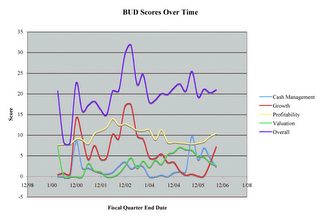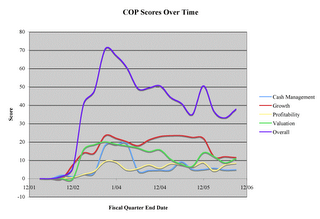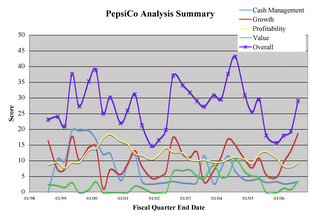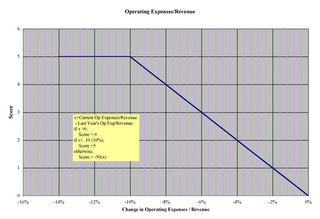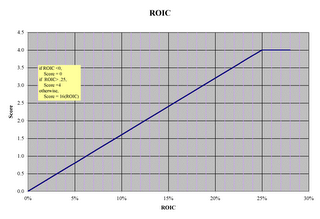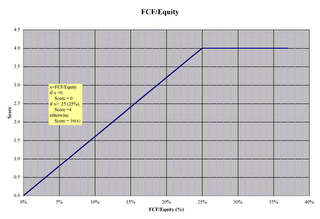Wal-Mart has been a disruptive force, with positive and negative effects, in the U.S. and world economies. These disruptions, when coupled with the company's scale and huge customer base, also makes it a lightning rod for criticism. Wal-Mart revolutionized retailing by using information technology to manage its supply chain and by pressuring manufacturers to squeeze every penny out of their costs. Rival discounters fell by the wayside, and manufacturers with higher costs suffered mightily. On the other hand, Wal-Mart's discounting is responsible for lower inflation (and thus interest rates), although this effect might not have been reflected fully in the published statistics. However, with the U.S. market now saturated, and the company continuing to slash prices, Wal-Mart's growth (as measured by same-store sales) has shrunk to the low single digits. Target, which appeals to a somewhat more affluent customer base, has been eroding Wal-Mart's market share from above. From below, high gas prices have cut the amount of money Wal-Mart's customer have to spend. The stock price, with a few rare exceptions, has been between $43 and $50 per share since March 2005.
When we analyzed WMT after the quarter that ended in July 2006, the Overall score was a modest 36 points. At 14 points, Value was the attribute gauge with the highest score. Cash Management and Profitability were weakest at 4 points.
We have since updated the analysis to incorporate WMT's financial results for the latest quarter, which was the third of fiscal 2007. With data through 31 October 2006, our gauges now display the following scores:
- Cash Management: 4 of 25
- Growth: 9 of 25
- Profitability: 5 of 25
- Value: 11 of 25
- Overall: 32 of 100
Cash Management. This gauge held steady at 4 points from July to October. The Current Ratio is now 0.85. It has been stable at this level for six years. We generally would prefer to see it higher, but it's a non-issue for WMT. Inventory/Cost of Goods Sold is now 54 days. The inventory level was 46 days at the end of the prior quarter, and it was 57 days at the end of the year-earlier quarter. A review of the historical data indicates that the company always builds inventory in the October quarter for the upcoming holiday season. Therefore, the increase from the second to the third quarter is not worrisome. As a retailer, all of WMT's Inventory is product ready for sale (i.e., Finished Goods). Accounts Receivable/Revenue is 2.7 days. This value trended lower during the late 1990's and the beginning of the current decade, until it bottomed out at 1.5 days in January 2003. It has since be moving higher. The increase, although small, indicates the company ishaving more trouble getting paid by its customers.
Growth. This gauge increased 3 points from July. Revenue growth is 11 percent year over year; it has been holding steady at this level. Net Income growth is 9 percent; it has been holding steady at this modest level for the last and a half, but was significantly higher throughout much of the company's lifetime. Changes in the income tax rate have not been significant enough to have a material effect on Net Income. CFO growth jumped to a strong 25 percent; this rate is the highest in the last three years. Revenue/Assets is 223 percent; it has been trending down, but very slowly. It indicates that the company is becoming somewhat less efficient at generating sales.
Profitability. This gauge increased 1 points from July. ROIC held at a moderate 12 percent. It was also 12 percent a year ago. FCF/Equity held at 7 percent. Years ago, it was in the teens. Operating Expenses/Revenue stayed at 95 percent, which is pretty much where they have always been. Gross Margin and SG&A expenses have been remarkably constant. The Accrual Ratio, which we like to be both negative and declining, edged down to +5 percent. This tells us that more of the company's Net Income is due to CFO, in contrast to changes in balance sheet accruals.
Value. This gauge, based on the stock price of $49.28 at the quarter's end on 31 October, declined to a mediocre 11 points, compared to 14 points 3 and 12 months ago. The P/E at the end of the quarter was 17.5, up a little from recent quarters, but way below the 5-year median of 25. The decrease suggests the shares are becoming less expensive. The average P/E for the industry is 20.7. To remove the effect of overall market changes on the P/E, we note that the company's current P/E is at an 9 percent premium to the average P/E (using core operating earnings) for stocks in the S&P 500. The premium was much higher when the company was growing at faster rate. The PEG ratio of 2.0 is indicative of a modestly expensive stock. It has been increasing slowly (i.e., becoming more expensive. The Price/Revenue ratio has steady 60 percent. The long-term trend is down, suggests the shares are becoming less expensive. The average Price/Sales for the industry is 77 percent.
Now at so-so 32 out of 100 possible points, the Overall gauge has been in the 30's for most of the last four years, with the occasional 20-something or 40 something. There is nothing in these results to suggest that the company's performance is turning a corner.
